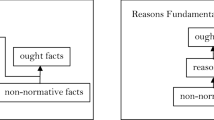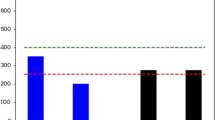Abstract
This paper identifies and illuminates a common impossibility principle underlying a number of impossibility theorems in social choice. We consider social choice correspondences assigning a choice set to each non-empty subset of social alternatives. Three simple axioms are imposed as follows: unanimity, independence of preferences over infeasible alternatives, and choice consistency with respect to choices out of all possible alternatives. With more than three social alternatives and the universal preference domain, any social choice correspondence that satisfies our axioms is serially dictatorial. A number of known impossibility theorems—including Arrow’s Impossibility Theorem, the Muller–Satterthwaite Theorem, and the impossibility theorem under strategic candidacy—follow as corollaries.
Similar content being viewed by others
Notes
Logically, all theorems are truths and are all equivalent.
See Barberà and Peleg (1990) for the Gibbard–Satterthwaite Theorem on the domain of continuous preferences over a compact metric space of alternatives, as well as the delicacy of strategy-proofness when preferences may be weak.
ACA has been interpreted as a rationality axiom (Arrow 1959). Our result indicates, however, that this rationality condition follows from our three axioms.
The original definition of IIA (Arrow 1963, p. 27) corresponds to our Independence of Infeasible Alternatives. However, Arrow’s motivating examples—death of a candidate (p. 26) and rank-order voting (p. 27)—are violations of our Independence of Losing Alternatives, hence ACA. See Denicolò (2000) for a discussion.
See also Campbell and Kelly (2002) for a survey on versions and proofs of impossibility theorems.
Finiteness of \(X\) ensures the existence of best alternatives on any feasible set according to any preferences. This assumption can be relaxed at the cost of distracting technical qualifications, which we would like to avoid. See Man and Takayama (2013) for details.
The name Strong Unanimity was suggested by an anonymous referee. This axiom was stated in the stronger form that a uniquely weakly Pareto dominant alternative within any subset has to be chosen from the subset. We thank another anonymous referee for suggesting this weakened version.
This condition is best known as “Independence of Irrelevant Alternatives” (Arrow 1963). “Independence of Infeasible Alternatvies” (Grether and Plott 1982; Ehlers and Weymark 2003) is a more precise description. To avoid confusion, we follow Le Breton and Weymark (2011) in using the acronym IIF and reserve IIA for Independence of Irrelevant Alternatives. Another option is “Independence of Nonfeasible Alternatives” (Karni and Schmeidler 1976).
This definition put two restrictions when the relative rankings of a set of previously chosen alternatives have improved as follows: first, all such alternatives should remain chosen (\(Y \subseteq f(X, {\mathord {\succsim }}^{\prime })\)); second, no previously losing alternatives should become chosen (\(f(X, {\mathord {\succsim }}^{\prime }) \subseteq f(X, {\mathord {\succsim }})\)). When \(f\) is a function, this definition coincides with the usual definition (Muller and Satterthwaite 1977).
We thank three referees for proposing this lemma to us.
Since the relative ranking between \(x\) and \(y\) changes across the profiles, introducing \({\mathord {\succ }}^{\{x,y\}}\) by bringing \(\{x,y\}\) to the top does not help.
Since there are only three alternatives, ILA is equivalent to ACA. Thus, this example remains even if we assume ACA.
This will not violate Strong Unanimity since SU applies only when there is a unique weakly Pareto dominant alternative.
\(f(\{x,x\}, {\mathord {\succsim }}^0) = f(\{x\}, {\mathord {\succsim }}^0) = \{x\}\) for all \(x \in X\).
This is a serial dictatorship version. See Gevers (1979, Theorem 3).
This is the same as our SU. We keep the name to conform to the literature.
See Footnote 10 for the interpretation of this axiom.
There are multiple \({\mathord {\succsim }}^Y\) that take \(Y\) to the top from \({\mathord {\succsim }}\). One can pick any one of them for each pair of \({\mathord {\succsim }}\) and \(Y\) to define an extension. All our results are unaffected by the choice of \({\mathord {\succsim }}^Y\); and hence, the choice of the particular extension used. The same remark applies to Eq. (5) in Sect. 6.
We thank Salvador Barberà for this example.
For similar reasons \(f^*\) also violates Monotonicity.
Table 6 Preference profiles for Example 2 One may think a mechanism implements a set-valued social choice mapping if at each preference profile, the set of all equilibrium outcomes is equal to the value of the social choice correspondence. This ignores the fact that an equilibrium is commonly known. As long as the outcome of each equilibrium is a singleton, the mechanism is merely implementing a single-valued selection of the correspondence.
These definitions are for the implementation of single-valued social choice mappings only. See Jackson and Srivastava (1996, p. 29) for the definitions in their full generality.
A mechanism is bounded if, at each preference profile, each dominated action is dominated by an undominated action.
If \(g(a^{\prime }) \succ _i x\), then \(x \not \succsim ^{\prime }_i g(a^{\prime })\). By the hypothesis on \({\mathord {\succsim }}^{\prime }\), \(x \not \succsim _i g(a^{\prime })\), which is equivalent to \(g(a^{\prime }) \succ _i x\). If \(g(a^{\prime }) \sim _i x\), then \(x \not \succ ^{\prime }_i g(a^{\prime })\). By the hypothesis on \({\mathord {\succsim }}^{\prime }\), \(x \not \succ _i g(a^{\prime })\), which is equivalent to \(g(a^{\prime }) \succsim _i x\).
We thank Matthew Jackson for pointing us to this theorem.
We circumvent the difficulty of implementing a social choice when all individuals are indifferent between all alternatives by adding the dummy individual with the tie-breaking preference.
We do not allow for candidate voters (social alternatives which are also individuals).
We avoid calling this IIF as the domain on which this restriction applies is not necessarily \(2^X \setminus \emptyset \).
We thank John Weymark for pointing us to this theorem.
References
Arrow, K.J.: Rational choice functions and orderings. Economica 26(102), 121–127 (1959)
Arrow, K.J.: Social Choice and Individual Values, 2nd edn. Yale Univeristy Press, New Haven (1963)
Barberà, S.: Pivotal voters: a new proof of Arrow’s theorem. Econ. Lett. 6(1), 13–16 (1980)
Barberà, S.: Strategy-proofness and pivotal voters: a direct proof of the Gibbard–Satterthwaite theorem. Int. Econ. Rev. 24(2), 413–417 (1983)
Barberà, S., Peleg, B.: Strategy-proof voting schemes with continuous preferences. Soc. Choice Welf. 7(1), 31–38 (1990)
Barberà, S., Dutta, B., Sen, A.: Strategy-proof social choice correspondences. J. Econ. Theory 101(2), 374–394 (2001)
Benoît, J.P.: The Gibbard–Satterthwaite theorem: a simple proof. Econ. Lett. 69(3), 319–322 (2000)
Benoît, J.P.: Strategic manipulation in voting games when lotteries and ties are permitted. J. Econ. Theory 102(2), 421–436 (2002)
Campbell, D.E.: Manipulation of social choice rules by strategic nomination of candidates. Theory Decis. 10(1–4), 247–263 (1979)
Campbell, D.E., Kelly, J.S.: Impossibility theorems in the Arrovian framework. In: Arrow, K.J., Sen, A.K., Suzumura, K. (eds.) Handbook of Social Choice and Welfare, vol. 1, chap. 1, pp. 35–94. North-Holland, Amsterdam (2002)
Ching, S., Zhou, L.: Multi-valued strategy-proof social choice rules. Soc. Choice Welf. 19(3), 569–580 (2002)
Denicolò, V.: Independence of irrelevant alternatives and consistency of choice. Econ. Theory 15(1), 221–226 (2000)
Duggan, J., Schwartz, T.: Strategic manipulability without resoluteness or shared beliefs: Gibbard–Satterthwaite generalized. Soc. Choice Welf. 17(1), 85–93 (2000)
Dutta, B., Jackson, M.O., Le Breton, M.: Strategic candidacy and voting procedures. Econometrica 69(4), 1013–1037 (2001)
Ehlers, L., Weymark, J.A.: Candidate stability and nonbinary social choice. Econ. Theory 22(2), 233–243 (2003)
Eraslan, H., McLennan, A.: Strategic candidacy for multivalued voting procedures. J. Econ. Theory 117(1), 29–54 (2004)
Gärdenfors, P.: On definitions of manipulation of social choice functions. In: Laffont, J.J. (ed.) Aggregation and Revelation of Preferences. North-Holland, Amsterdam (1979)
Geanakoplos, J.: Three brief proofs of Arrow’s impossibility theorem. Econ. Theory 26(1), 211–215 (2005)
Gevers, L.: On interpresonal comparability and social welfare orderings. Econometrica 47(1), 75–89 (1979)
Gibbard, A.: Manipulation of voting schemes: a general result. Econometrica 41(4), 587–601 (1973)
Grether, D.M., Plott, C.R.: Nonbinary social choice: an impossibility theorem. Rev. Econ. Stud. 49(1), 143–149 (1982)
Hansson, B.: Voting and group decision functions. Synthese 20(4), 526–537 (1969)
Jackson, M.O., Srivastava, S.: A characterization of game-theoretic solutions which lead to impossibility theorems. Rev. Econ. Stud. 63(1), 23–38 (1996)
Karni, E., Schmeidler, D.: Independence of nonfeasible alternatives, and independence of nonoptimal alternatives. J. Econ. Theory 12(3), 488–493 (1976)
Kirman, A.P., Sondermann, D.: Arrow’s theorem, many agents and invisible dictators. J. Econ. Theory 5(2), 267–277 (1972)
Le Breton, M., Weymark, J.A.: Arrovian social choice theory on economic domains. In: Arrow, K.J., Sen, A.K., Suzumura, K. (eds.) Handbook of Social Choice and Welfare, vol. 2, chap. 17, pp. 191–299. North-Holland, Amsterdam (2011)
Man, P., Takayama, S.: A unifying impossibility theorem for compact metric social alternatives space. Working Paper, University of Queensland (2013)
Muller, E., Satterthwaite, M.A.: The equivalence of strong positive association and strategy-proofness. J. Econ. Theory 14(2), 412–418 (1977)
Reny, P.J.: Arrow’s theorem and the Gibbard–Satterthwaite theorem: a unified approach. Econ. Lett. 70(1), 99–105 (2001)
Rodríguez-Álvarez, C.: Candidate stability and voting correspondences. Soc. Choice Welf. 27(3), 545–570 (2006)
Satterthwaite, M.A.: Strategy-proofness and Arrow’s conditions: existence and correspondence theorems for voting procedures and social welfare functions. J. Econ. Theory 10(2), 187–217 (1975)
Sen, A.: Another direct proof of the Gibbard–Satterthwaite theorem. Econ. Lett. 70(3), 381–385 (2001)
Vohra, R.V.: Mechanism Design: A Linear Programming Approach. Econometric Society Monographs Series. Cambridge University Press, New York (2011)
Yu, N.N.: A one-shot proof of Arrow’s impossibility theorem. Econ. Theory 50(2), 523–525 (2012)
Author information
Authors and Affiliations
Corresponding author
Additional information
This paper was previously circulated under the title “Three Impossibility Theorems, Two Independence Axioms, and One Unified Proof.” We thank Hugo Sonnenschein for suggesting a new title. We would also like to thank Salvador Barberà, Matthew Jackson, Andy McLennan, Phil Reny, Arunava Sen, William Thomson, Rabee Tourky, John Weymark, Nicholas Yannelis, participants at the “Votes and Incentives: the Design of Institutions” Workshop at Universitat Autònoma de Barcelona and anonymous referees for their helpful comments. Takayama gratefully acknowledges the financial support from the Australian Research Council Grant (DP1093105) and the Early Career Researcher Grant at the University of Queensland. Man is grateful for the financial support of the University of Queensland Grant 2010002370, as well as the hospitality of Takayama and Andy McLennan during the Brisbane flood in 2011, when this paper was written.
Rights and permissions
About this article
Cite this article
Man, P.T.Y., Takayama, S. A unifying impossibility theorem. Econ Theory 54, 249–271 (2013). https://doi.org/10.1007/s00199-013-0750-6
Received:
Accepted:
Published:
Issue Date:
DOI: https://doi.org/10.1007/s00199-013-0750-6
Keywords
- Impossibility theorem
- Independence of infeasible alternatives
- Independence of losing alternatives
- Social choice




